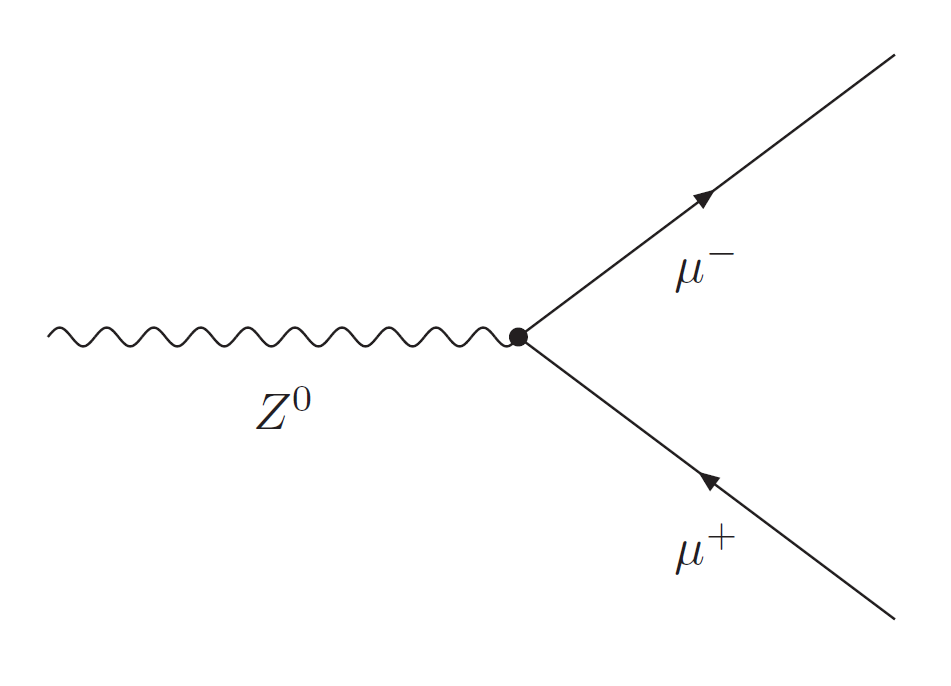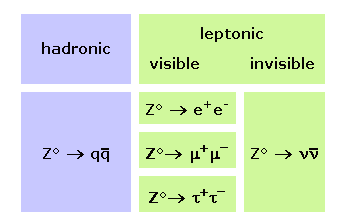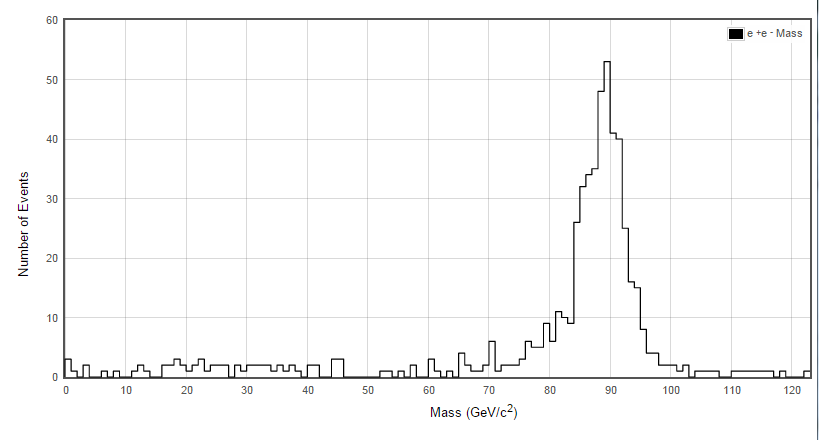Calculating the Mass of The Z Boson
02/21/2015
Abstract
The main objective of this experiment was to determine the mass of the Z Boson. The Z Boson is a guage boson with a lifetime of 3 x 10-25 seconds that is produced through beta decay. By analizing Z Boson type events, the mass of this elementary particle was calculated and confirmed the actual mass of 91.1876 GeV/c2.
Introduction
The W and Z Bosons (W+, W- and Z) are weak bosons and are responsible for the weak interaction, which causes radioactive decay and nuclear fission. While the W Boson can be either positively or negatively charged, the Z Boson is neutral. Since the Z Boson is relatively heavy, it has a very short lifespan. W and Z Bosons were first disovered by researchers at CERN in 1983. The Z Boson has two different decay patterns. It either decays into a muon and anti muon or a positron and an electron.
Procedures
Using the CMS e-Lab website to obtain data and graphs from an abundant amout of events, the combination of all this information from the decay patterns of Z Boson beta decay can be used to find the average mass of the Z Boson. This large sample size will help make sure the mass is acurate. The investigation will include data from the two decay patterns of the Z Boson: electron-positron decays, and muon anti-muon decays. This is because the Z Boson is neutral and charge has to be conserved. By using Einstein's famous formula, E=mc2 one can calculate the mass, M with the known energy released from the decay of the Z Boson.
Results
For the Z Boson dimuon decay, there were over 70 events with masses approximately 90 GeV/c2 and over 50 events for the electron positron decay. This strongly indicates a Z Boson mass around 90 GeV/c2.
Figures

Figure 1. Z Boson Dimuon Decay

Figure 2. Z Boson Decay into e- and e +

Figure 3. Z Boson Decay Paths

Figure 4. Z Mass Plot






Discussion and Conclusions
The mass generally agreed upon by modern particle physicists is 91.1876 GeV/c2, and the mass results from this investigation were very close to that value. This shows that the data used by the LHC is accurate. Ultimately, this study has confirmed the mass of the Z Boson and further backs up the authenticity of the data used. Additonally this investigation indicates that the procedure and Einstein's equation, which were both used to carry out the study, are both viable methods of determining the mass of the Z Boson. For future experiments, a larger sample size could be investigated or one could analyze the decay patterns to discover possible causes of the lost energy.
Bibliography
http://en.wikipedia.org/wiki/W_and_Z_bosons
www.i2u2.org
http://www.atlas.ch/HiggsResources/
http://pdg.lbl.gov/2013/listings/rpp2013-list-w-boson.pdf